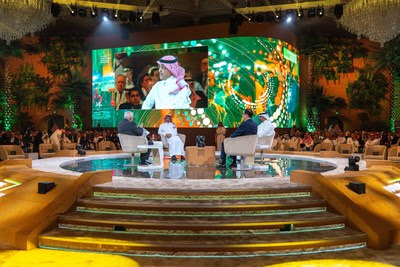Russia’s invasion of Ukraine creating global upheaval, and war, conflict, and unrest blighting all parts of the world in 2022. The UN stressed the importance of international dialogue, and announced plans for a new peace agenda.
February saw a furious round of diplomacy at the UN, as it became increasingly clear that Russia was intent on invading Ukraine, a crisis which UN Secretary-General António Guterres said was testing the “entire international system”.
“We need restraint and reason. We need de-escalation now,” spelled out the UN chief, urging all sides to “refrain from actions and statements that would take this dangerous situation over the brink”. These calls were in vain, however, and the war, which Russia described as a “special military operation,” began.
Global ramifications of Ukraine war : from food and fuel, to nuclear threat
The conflict took on a significance far beyond its effect on Ukraine and Russia. Global fuel and food prices soared, and the UN trade body UNCTAD identified the war as the main contributing factor to projections of a global economic downturn, in a world still reeling from the consequences of the COVID-19 pandemic.
Dark memories of the Chernobyl nuclear power plant explosion in 1986 were revived, when the Zaporizhzhia plant in southeastern Ukraine, the largest in Europe, came under Russian military control.
The UN nuclear watchdog (IAEA) warned of potentially catastrophic consequences, expressing concern at the alarming conditions of the plant, and the shelling that took place not far from the reactors. Fighting in the vicinity of a nuclear plant was, said IAEA chief Rafael Grossi in November, “playing with fire”.
UN grain deal a ‘ray of hope to ease human suffering’
An highlight of UN diplomacy this year was undoubtedly the successful implementation of the Black Sea Grain Initiative, which saw exports resume from Ukrainian ports in July, and paved the way for Russian food and fertilizer to reach global markets, helping to slow the vertiginous rise in the price of grains, cooking oils, fuel and fertilizer across the world.
The delicately balanced deal involved the establishment of a Joint Coordination Centre in the Turkish city of Istanbul, with representatives from Ukraine, Russia and Türkiye, to monitor the onloading of grain at the three ports.
Ukrainian pilot vessels guide the ships through the Black Sea, which is mined, after which they head out through the Bosphorus Strait along an agreed corridor.
Perhaps more impressive, given the lack of trust between Ukraine and Russia, and no prospect of a ceasefire in sight, is that the deal was renewed for a further 120 days in November. By then more than 11 million tonnes of essential foodstuffs had been shipped from Ukraine, and food prices began to stabilize.
Africa: Hope for peace in Sudan and Ethiopia, conflict grinds on in DRC and Mali
UN peacekeepers in several African countries found themselves in harm’s way this year, whilst carrying out their role protecting civilians from violence.
Over the course of the year, Mali’s reputation as the world’s most dangerous posting seemed to be borne out: nearly every month saw an attack that killed or wounded peacekeepers, amid reports of civilian massacres, and a deteriorating security situation.
The Democratic Republic of the Congo (DRC) was riven by attacks from militant groups and intercommunal violence which displaced thousands of people. Hundreds of civilians were killed throughout the year, and peacekeepers again made the ultimate sacrifice. In one attack, in July, the UN Mission’s base in the restive North Kivu region was hit during violent demonstrations, killing three peacekeepers.
There was better news from Sudan, which began the year embroiled in political unrest, following a military coup in 2021. Protestors against the regime continued to be targeted, and the UN condemned an excessive use of force, which saw several of them killed.
By December, however, Mr. Guterres was able to hail a peace agreement between civilian and military leaders, and the UN team in Sudan announced that they would ensure a package of support during the transitional period.
In Ethiopia, which has seen fierce fighting centred on the Tigray region, efforts to defuse the conflict led to a ceasefire in March. This did not end the violence, however, or the humanitarian crisis resulting from the unrest, but a peace deal, which was finally signed in November, was described by Mr. Guterres as a “critical first step” towards ending the brutal two-year civil war.
Middle East: No end in sight for many long-running conflicts
In March, Mr. Guterres called for the international community not to fail the Syrian people, as the country entered the eleventh year of a brutal civil war, in which 307,000 civilians have died.
The year ended with signs of military escalation, and no prospect of a peace deal, but the UN Special Envoy to Syria, Geir Pedersen, continued to meet with a host of key Syrian and international stakeholders, in pursuit of an eventual political solution to break the deadlock.
Yemen is now in the seventh year of its catastrophic conflict, which again exacted a vicious toll on its people. Hopes were raised in April, when the UN brokered a nationwide truce, the first in six years. However, the truce came to an end in October, leading to fresh uncertainty.
Hans Grundberg, the UN Special Envoy to Yemen, told the Security Council in October that he believed a peace agreement could still be achieved: “With the stakes this high, it is critical that we do not lose this opportunity. The parties need to demonstrate the leadership, compromise and flexibility required to urgently reach an agreement”.
Little progress was made in relations between Israel and Palestine, during a year in which more than 150 Palestinians and over 20 Israelis were killed in the West Bank and Israel.
UN Middle East Envoy Tor Wennesland expressed deep concern at the sharp increase in violence against civilians on both sides which, he said, undermined a peaceful resolution to the conflict.
Mr. Wennesland called on Israel to cease advancement of all settlement activities as well as the demolition of Palestinian-owned property, and to prevent possible displacement and evictions. “The deepening occupation, the increase in violence, including terrorism, and the absence of a political horizon have empowered extremists and are eroding hope among Palestinians and Israelis, alike, that a resolution of the conflict is achievable,” he warned.
Americas: Haiti ‘on verge of abyss’, Colombia closer to lasting peace
It’s hard to overstate the extent to which the security situation in Haiti collapsed in 2022. Practically nowhere in the capital, Port-au-Prince, could be deemed safe, as rival gangs fought over territory, terrorizing increasingly desperate citizens, already struggling to survive a humanitarian catastrophe.
In October, the UN Special Representative in the country, Helen La Lime, welcomed the sanctions regime adopted by the Security Council, which targets gang leaders and their backers. She told the Security Council that even if a political solution could be found, it would not be sufficient to address the crisis.
Ms. La Lime indicated her support for the mobilization of a specialized military force, whilst the US Permanent Representative to the UN, Linda Thomas-Greenfield, told the Security Council in October that the US and Mexico are working on a resolution which will authorize a “non-UN international security assistance mission”, which would help in the delivery of urgently needed humanitarian aid.
There were positive signs that Colombia, which suffered decades of civil war, may be on the verge of achieving a lasting peace.
Six years on from the historic peace accord signed between the Colombian government and FARC rebels, the country was still beset by outbreaks of fighting in 2022 and, in July, the UN human rights office called on the incoming administration to tackle rising violence, particularly in rural areas.
By October, the head of the UN Verification Mission in Colombia, felt confident enough to brief the Security Council that expectations were running high for progress towards the full and final implementation of a lasting peace deal: “I am certainly confident that Colombia can demonstrate to the world, once again, that there is no better alternative to ending conflicts than through dialogue”.
Asia: Korean nuclear tension, scores attacked in Afghanistan
Much of the focus on Afghanistan has centred on the steady erosion of women’s rights under the Taliban, the de facto rulers of the country, but security has been increasingly challenging.
The Afghan people were rocked by waves of deadly terror attacks, from blasts at schools in April, to the bombing of a mosque in August, claimed by the so-called Islamic State group, also known as Da’esh. The group also carried out attacks against the Russian and Pakistani embassies, and a hotel hosting many Chinese nationals.
The top UN official in Afghanistan, Roza Otunbayeva, announced in December that the UN is keeping dialogue open with the leaders of the Taliban, despite their differing positions. Whilst the Taliban face little to no political opposition, they are unable to satisfactorily address terrorist groups operating in the country, she reported.
The Democratic People’s Republic of Korea (DPRK), more commonly known as North Korea, continued to test missiles in 2022, provoking condemnation from the UN, and fears that the country was attempting to develop its nuclear weapons capability.
António Guterres declared that a long-range test in March was in violation of Security Council resolutions, and called an October launch over Japan a “reckless act”.
In a Security Council briefing in November, Rosemary Di Carlo, the head of UN Political and Peacebuilding Affairs (DPPA), said that DPRK had reportedly launched its “largest and most powerful missile, capable of reaching all of North America”.
Overall, said, Ms. Di Carlo, DPRK had launched some 60 ballistic missiles. She reiterated calls on the country to “desist from taking further provocative actions and to fully comply with its international obligations under relevant Security Council resolutions”.
A new UN peace agenda
The wider issue of peace is likely to figure more highly on the UN agenda in 2023, when the UN chief, António Guterres, delivers A New Agenda for Peace, to Member States.
Addressing the Security Council in December, Mr. Guterres explained that the document will articulate the Organization’s work in peace and security; set out a comprehensive approach to prevention; link peace, sustainable development, climate action, and food security; and consider how the UN adapts to cyberthreats, information warfare, and other forms of conflict.
“The challenge ahead is clear,” said Mr. Guterres “To save succeeding generations from the scourge of war, with a revitalized multilateralism that is effective, representative and inclusive”.
Source: UN News Service





